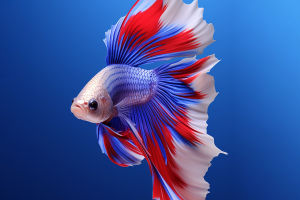Purring is a fascinating behavior observed in cats, but the reasons and mechanisms behind it remain somewhat puzzling.
While we often associate purring with a cat's contentment, this sound can manifest in various other contexts.
Here, Lykkers, Let's delve into the physiological mechanisms, emotional expressions, and health effects of purring, offering a comprehensive understanding of why cats purr.
Physiological Mechanism
The purring sound is low-frequency, typically ranging from 25 to 150 Hz. Research indicates that this sound is generated by the rhythmic contraction of muscles within a cat's larynx.
When a cat breathes, these laryngeal muscles contract and relax cyclically, causing the vocal cords to vibrate rapidly and produce the characteristic purring sound. This phenomenon is not exclusive to domestic cats but is also observed in wild cats and large felines such as cougars and leopards.
Emotional Expression
Purring serves as a versatile form of emotional expression in cats. Below are several scenarios illustrating how purring reflects different emotional states:
1. Contentment and Relaxation
Cats commonly purr when they are in a good mood and feel happy. The sound is produced by the vibration of the false vocal cords resonating within the laryngeal cavity. When a cat feels satisfied, excited, or relaxed, it will emit this soothing purring sound.
2. Seeking Attention and Affection
When a cat desires interaction or affection from its owner, it may purr to attract attention. This purring can be particularly lively and loud, signaling the cat's eagerness for play or petting. Often, a cat lying beside its owner, contentedly drifting into sleep, will purr continuously, expressing its closeness and comfort.
3. Comfort and Enjoyment
During moments of physical pleasure, such as being petted or massaged, cats will purr to signal their enjoyment. In this context, the "purring" sound means the cat is highly comfortable and appreciative of the affection, encouraging the owner to continue.
4. Affection for People or Objects
Cats sometimes purr simply because they snuggle up to their favorite person or object. This behavior signifies a deep affection and trust towards the subject of their purring.
5. Relaxation and Laziness
Purring can also occur when cats stretch their limbs and relax. This type of purring reflects a state of lazy contentment and physical comfort.
6. Discomfort or Stress
Interestingly, cats may also purr when they are in pain or feeling uncomfortable. This kind of purring is thought to serve as a self-soothing mechanism, helping the cat manage stress and discomfort.
From a medical perspective, the anatomy of a cat's throat plays a crucial role in purring. The skeletal structure includes the thyroid cartilage and cricoid cartilage, with the laryngeal cavity divided into three parts.
The upper part is the vestibule of the larynx, leading to the false vocal cords. The middle part is the space between the false and true vocal cords, and the third part is the narrow cavity between the vocal cords and the cartilage ring.
The purring sound is produced by the resonance of the laryngeal cavity when the false vocal cords vibrate.
Conclusion
The purring of cats is a multifaceted behavior encompassing aspects of physiology, emotion, and health. While traditionally seen as a sign of satisfaction and happiness, purring serves a more complex role, including self-soothing during stress or discomfort.
Understanding why cats purr can enhance our appreciation and care for these fascinating creatures, revealing the intricate connections between their behaviors and well-being.


